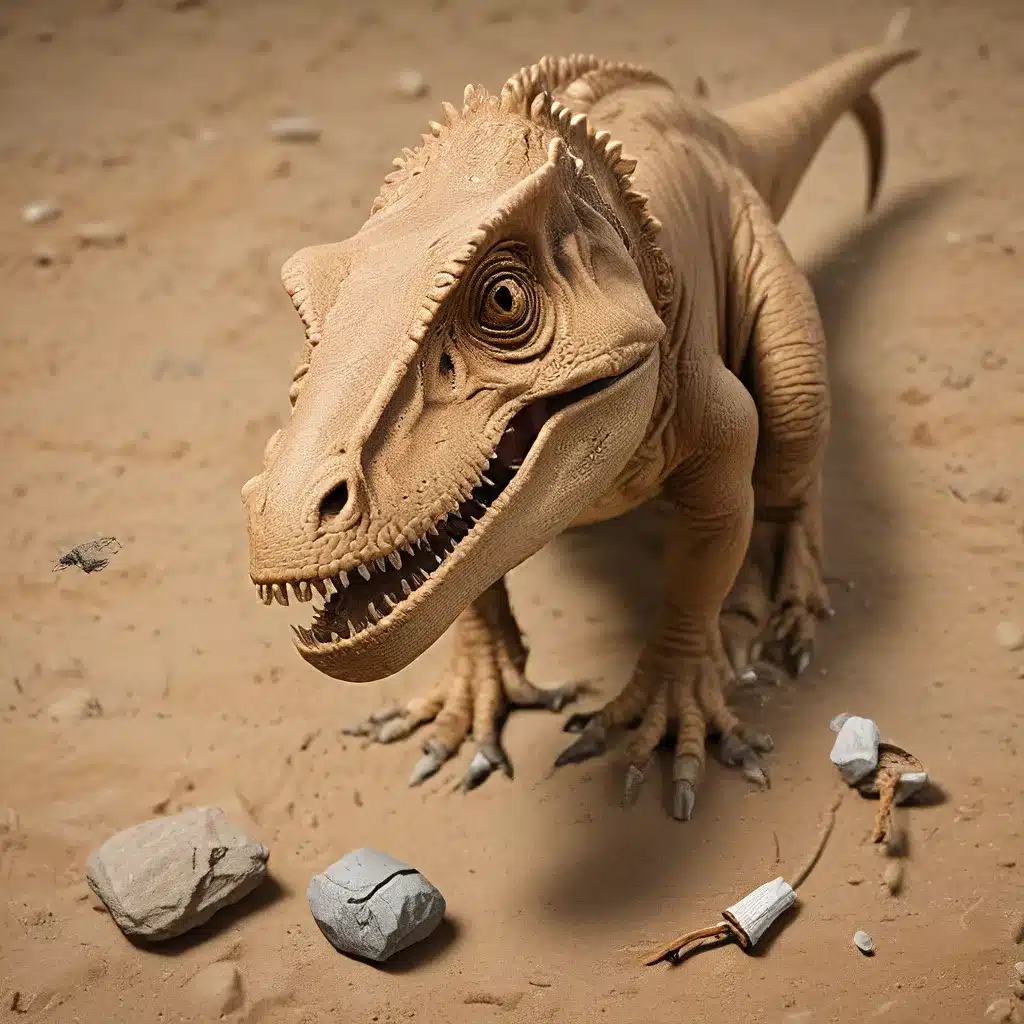
In the vast expanse of the prehistoric world, dinosaurs have long captivated the human imagination, sparking endless fascination and speculation. From the towering sauropods to the fearsome tyrannosaurids, these ancient titans have left an indelible mark on our understanding of life on Earth. But what if the true story of the dinosaurs extends far beyond the fossilized bones we’ve unearthed? What if their behaviors and social dynamics hold the key to unlocking the secrets of their world?
Uncovering the Mysteries of Dinosaur Colonies
Recent archaeological discoveries and scientific analyses have shed new light on the complex social structures and communal behaviors of certain dinosaur species, particularly the hadrosaurs, or duck-billed dinosaurs. These herbivorous giants were once thought to be solitary creatures, wandering the Cretaceous landscape in search of sustenance. However, emerging evidence suggests that the hadrosaurs may have lived in vast, interconnected colonies, akin to the hive-like societies of modern-day insects.
Clues to this colonial lifestyle can be found in the fossilized remains of hadrosaur nesting sites, which often reveal the presence of hundreds, if not thousands, of individual eggs clustered together. This suggests a level of coordination and cooperation that would have been necessary to maintain such large-scale breeding grounds. Furthermore, the discovery of high-density bone beds containing the remains of multiple hadrosaur individuals of varying ages points to the existence of complex social structures and potentially even a form of herd or colony defense.
Deciphering Dinosaur Diets and Ecosystem Interactions
But the implications of hadrosaur colonies extend far beyond their social dynamics; they may have also played a vital role in shaping the broader Cretaceous ecosystem. These massive herbivores would have required an immense amount of sustenance, and their feeding habits may have had a profound impact on the vegetation and landscape surrounding their colonies.
One particularly intriguing aspect of hadrosaur foraging behavior is their apparent preference for rotten and decaying wood. Analyses of fossilized feces and gut contents have revealed the presence of various types of fungi and microorganisms, suggesting that the hadrosaurs may have relied on a diverse array of dietary sources to meet their nutritional needs.
This dietary flexibility may have had far-reaching consequences for the overall health and productivity of the Cretaceous ecosystem. By consuming and processing a wide range of organic materials, including dead and decaying plant matter, the hadrosaurs could have played a crucial role in nutrient cycling and the maintenance of a dynamic, thriving environment.
Moreover, the presence of large hadrosaur colonies may have attracted a diverse array of other Cretaceous species, from scavenging predators to small herbivores and omnivores. This complex web of interactions would have created a rich and vibrant ecosystem, with the hadrosaurs serving as the lynchpin that held it all together.
Unraveling the Mysteries of Fossilized Behavior
As we continue to uncover more about the lives and behaviors of these ancient giants, the picture of the Cretaceous world becomes increasingly complex and fascinating. The discovery of hadrosaur colonies, with their intricate social structures and ecosystem impacts, highlights the importance of looking beyond the fossil record and considering the broader context in which these animals lived.
By combining the insights gleaned from paleontological discoveries, geological evidence, and modern ecological analogies, researchers are piecing together a more comprehensive understanding of the dinosaur world. This holistic approach, which considers the interconnectedness of various natural systems, is essential for unraveling the mysteries of fossilized behavior and unlocking the secrets of the past.
The Importance of Interdisciplinary Collaboration
The study of dinosaurs and their ancient environments is a truly interdisciplinary endeavor, requiring the expertise of paleontologists, geologists, biologists, and even computer scientists. As new technologies and analytical techniques emerge, researchers are able to glean ever-deeper insights from the fossil record, shedding light on the complex interplay between the dinosaurs and their environment.
For example, the use of advanced imaging techniques, such as CT scanning and 3D modeling, has allowed scientists to examine the internal structures of fossils in unprecedented detail, revealing new information about the physiology and biomechanics of these ancient creatures. Similarly, the integration of “big data”** approaches, including the analysis of large-scale datasets and the application of machine learning algorithms, has enabled researchers to identify patterns and correlations that were previously obscured.
By fostering collaboration across diverse fields of study, the scientific community can continue to push the boundaries of our understanding of the prehistoric world. From uncovering the intricacies of dinosaur social structures to deciphering the complex interactions within Cretaceous ecosystems, this interdisciplinary approach promises to yield exciting new insights that will captivate and inspire generations to come.
Exploring the Legacy of the Dinosaurs
The story of the dinosaurs is not merely a tale of long-extinct creatures; it is a testament to the resilience, adaptability, and sheer ingenuity of life on Earth. By delving deeper into the fossilized record and embracing the full complexity of the prehistoric world, we can gain a greater appreciation for the remarkable diversity and complexity of the natural world.
As we continue to unravel the mysteries of the dinosaurs, we may find that their legacy extends far beyond the boundaries of paleontology. The lessons we learn about social dynamics, ecosystem function, and the adaptability of life in the face of environmental change may hold profound implications for our understanding of the natural world, and for our own future as stewards of the planet.
Through the lens of the dinosaurs, we are invited to expand our horizons, to think outside the confines of the present, and to recognize the timeless patterns that connect all living things. It is in this spirit of exploration and wonder that the story of the dinosaurs continues to captivate and inspire us, beckoning us to delve ever deeper into the secrets of the past, and to uncover the timeless truths that lie hidden within.


